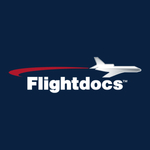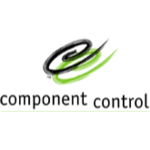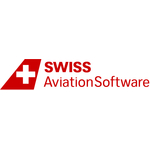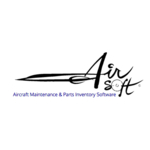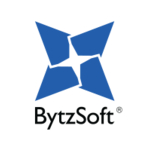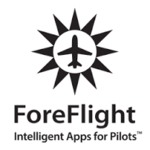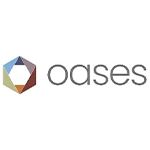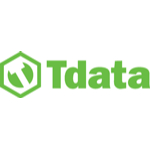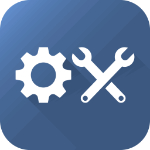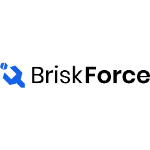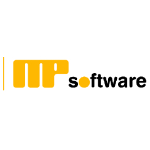TechnologyCounter provides genuine, unbiased real user reviews to help buyers make informed decisions. We may earn a referral fee when you purchase through our links, at no extra cost to you.
List of 15 Best Aviation Maintenance Software
Showing 1 - 15 of 49 productsTraxxall is a aircraft maintenance tracking software that revolutionizes the way aviation professionals manage their fleet. With its user-friendly interface and innovative features, Traxxall streamlines maintenance operations and saves valuable time...Read Traxxall Reviews
Flightdocs is a aviation maintenance platform that streamlines operations and ensures regulatory compliance. With its intuitive features and user-friendly interface, Flightdocs revolutionizes the way maintenance tasks are managed, providing a reliabl...Read Flightdocs Reviews
Quantum Control is a solution for streamlining and optimizing your business operations. With state-of-the-art technology and innovative features, Quantum Control empowers you to take control of your inventory, maintenance, financials, and more. Perfe...Read Quantum Control Reviews
Aeronet is an innovative software solution designed to revolutionize the way businesses handle airline and travel bookings. Say goodbye to the traditional, time-consuming process and hello to a seamless is a way of managing all your travel needs. Wit...Read Aeronet Reviews
AMOS is a and innovative software designed to streamline and optimize business processes. With its user-friendly interface features, AMOS makes it easy for companies to manage their operations efficiently and effectively. Say goodbye to tedious tasks...Read AMOS Reviews
Integrated Aviation Software is a tool that revolutionizes flight operations. This innovative software seamlessly integrates various aspects of aviation, allowing for efficient and seamless management. From flight planning to scheduling and reporting...Read Integrated Aviation Software Reviews
Airsoft is a dynamic and realistic combat simulation game that provides players with an immersive and adrenaline-fueled experience. With customizable equipment, exciting game modes, and a passionate community, Airsoft brings the thrill of real-life c...Read Airsoft Reviews
FlyPal is a software designed to simplify and streamline the management of flights. Developed by industry experts, FlyPal offers a user-friendly is a solution for organizing flight schedules and tracking maintenance activities. With its innovative fe...Read FlyPal Reviews
ForeFlight is a flight-planning assistant for pilots, offering unmatched convenience and accuracy in the palm of your hand. From detailed weather information and in-flight navigation tools to secure data syncing across all your devices, ForeFlight is...Read ForeFlight Reviews
OASES a revolutionary software designed to optimize and streamline your business operations. With advanced technology features, OASES offers a seamless solution to manage your entire business process efficiently. From inventory management to customer...Read OASES Reviews
MTrax is a software that revolutionizes the way businesses manage their tasks and workflows. With its user-friendly interface features, MTrax streamlines processes and increases productivity. Make your work faster and smarter with MTrax...Read MTrax Reviews
Blockedge is a blockchain software designed to revolutionize the way businesses operate. With its innovative features and seamless integration, Blockedge offers a streamlined approach to managing digital assets and transactions. Say goodbye to tediou...Read Blockedge Reviews
OXmaint, the ultimate maintenance management solution for businesses of all sizes. With its user-friendly interface and powerful features, OXmaint streamlines your maintenance processes and keeps your equipment running at its best. Say goodbye to man...Read OXmaint Reviews
BriskForce is a and innovative software that streamlines business processes and maximizes efficiency. With its user-friendly interface, BriskForce simplifies complex tasks and helps businesses thrive in a competitive market. Say goodbye to tedious ma...Read BriskForce Reviews
MPsoftware is a software designed to streamline your business operations and enhance productivity. With its user-friendly interface features, MPsoftware simplifies complex tasks and enables seamless communication and collaboration within your team. S...Read MPsoftware Reviews
- What Is Aviation Maintenance Software?
- Top Reasons Why Businesses Need Aviation Maintenance Software?
- What Are the Top Key Features of Aviation Maintenance Software?
- What Are the Top Benefits of Aviation Maintenance Software?
- What Are the Steps to Choose the Right Aviation Maintenance Software?
- What Are the Types of Aviation Maintenance Software for Different Industries?
- What Are the Technology Trends for Best Aviation Maintenance Software?
- What Are the Deployment Options for Aviation Maintenance Software?
What Is Aviation Maintenance Software?
Aviation maintenance software refers to a computer-based system employed by specialists in the field of aircraft maintenance for the purpose of strategizing, monitoring, and arranging aircraft repairs and associated documentation. The software offers effective and systematic resources for the management of several intricate activities related to aviation maintenance.
The aircraft maintenance systems has the capability to keep crucial documents, including comprehensive histories of systems and components, logs of flights and maintenance activities, as well as notes and schedules of technicians. This practice aids in guaranteeing that all aircraft maintenance procedures are executed with optimal efficiency and utmost safety.
Aircraft maintenance software encompasses distinct attributes such as the capacity to efficiently schedule and prioritize maintenance jobs, facilitate the uploading and tracking of aircraft maintenance histories, meticulously document systems and components traces, and effectively manage and retain any requisite airworthiness certificates.
Aircraft maintenance management system aids aviation maintenance professionals in maintaining organization and ensuring timely completion of repairs. Furthermore, the utilization of aircraft maintenance management software facilitates the efficient management of inventories and the processing of parts orders. This practice facilitates the monitoring of essential elements, while also guaranteeing the appropriate management of inventories.
Additionally, AMS aircraft maintenance software possesses the capability to compute fuel consumption rates and ascertain the expenses associated with operating an airplane. These characteristics facilitate the ability of maintenance personnel to proactively address faults and ensure adherence to all governmental requirements pertaining to aviation maintenance.
The utilization of aviation maintenance software enables specialists to effectively guarantee the safety and optimal functioning of aircraft.
Top Reasons Why Businesses Need Aviation Maintenance Software?
1. Management of aircraft maintenance and inspections: Aviation maintenance software offers a comprehensive framework for the monitoring and management of aircraft maintenance and inspections, thereby ensuring adherence to industry laws and standards for all aircraft.
2. Tracking maintenance records: Aviation maintenance management software facilitates the comprehensive monitoring of essential performance, maintenance, and repair data pertaining to individual aircraft, enabling prompt detection of any issues and subsequent implementation of appropriate remedial measures.
3. Streamlined communication between stakeholders: The program obviates the necessity of direct communication between maintenance staff and other stakeholders, such as flight operations and finance departments, in relation to records management and safety management.
4. Automated alerts: The configuration of aviation maintenance software enables the transmission of notifications to appropriate individuals in instances where an aircraft necessitates maintenance or inspection.
5. Optimization of maintenance costs: The software possesses the capability to provide comprehensive information pertaining to the financial requirements associated with the maintenance or overhaul of a singular aircraft, hence facilitating the optimization of maintenance expenditures.
6. Inventory management: Aviation maintenance management software facilitates the monitoring and administration of aircraft parts inventory, hence ensuring the timely availability of parts for maintenance or overhaul purposes.
7. Accurate tracking of technical log data: Aircraft maintenance management software facilitates the monitoring and administration of aircraft parts inventory, hence ensuring the timely availability of parts for maintenance or overhaul purposes.
8. Tracking of inspection status: Aviation maintenance software offers comprehensive data regarding the inspection status of individual aircraft, hence enhancing safety measures for every trip.
9. Scheduling of repairs: The software possesses the capability to be programmed in a manner that enables precise scheduling of repairs and maintenance jobs, hence mitigating any potential conflicts arising from hasty or erroneous scheduling practices.
10. Generation of maintenance summaries: The utilization of aircraft maintenance systems facilitates the generation of detailed maintenance summaries, hence enhancing the ability to effectively monitor and evaluate the operational efficiency of individual aircraft.
11. Standardization of repair processes: Aircraft maintenance management software enhances operating efficiency and mitigates the likelihood of errors by optimizing the repair and maintenance procedures.
12. Troubleshooting help: The aircraft maintenance management system has the capability to offer assistance in resolving certain technical issues, thereby reducing the duration required for conducting repairs.
13. Record keeping: The software system effectively manages and stores all pertinent data pertaining to the maintenance and repair activities of an aircraft, hence facilitating a comprehensive audit trail that serves management objectives.
14. Training information: The aviation maintenance management software provides a convenient means for effectively managing training requirements and facilitating the onboarding process for new workers.
15. Regulatory compliance: The aircraft maintenance systems facilitate the achievement of regulatory compliance by adhering to industry standards, including Federal Aviation Administration (FAA) requirements for airlines and Federal Aviation requirements (FAR) for private operators.
What Are the Top Key Features of Aviation Maintenance Software?
1. Scheduled and Unscheduled Maintenance Tracking: The utilization of aviation maintenance software enables users to effectively manage and monitor both planned and unplanned maintenance activities within a unified interface.
This feature facilitates the monitoring of intervals for preventative maintenance checks, as well as any additional maintenance chores that may occur outside of the regular plan.
2. Repair Order Management: Aviation maintenance software incorporates sophisticated repair order management functionalities that enable users to monitor work orders originating from any repair station, thereby assuring the adherence to appropriate standards for aircraft maintenance.
3. Automated Part Ordering: The inclusion of automated part ordering in aircraft maintenance systems is a prevalent characteristic, facilitating the swift and precise procurement of parts.
Consequently, this feature effectively diminishes the temporal and labor-intensive demands associated with maintaining the optimal operational state of an aircraft.
4. Automated Purchasing: The automated purchasing functionalities incorporated inside AMS aircraft maintenance software serve to optimize the procurement process by facilitating swift and effective acquisition of parts.
5. Reporting and Analysis: The aircraft maintenance management system in the field of aviation maintenance facilitates the generation of data and analytics pertaining to aircraft maintenance and performance. This methodology can assist operators in identifying possible areas for improvement and optimizing aircraft maintenance processes.
6. Electronic Signature: The aircraft maintenance program incorporates electronic signature functionalities that enable users to digitally affix their signatures onto various documents, including logbooks, so eliminating the need for physical signing.
7. Integration with Other Systems: Aircraft maintenance systems possess the capability to establish integration with external systems from third-party entities, such as fuel management systems or flight scheduling software. This feature enables customers to consolidate many operations into a single, integrated platform.
8. Inventory Management: The aviation maintenance software incorporates inventory management functionalities that facilitate the monitoring of component inventory levels, hence enhancing the precision of future maintenance work planning.
9. Cost Tracking: The cost monitoring functionalities of aircraft maintenance software enable users to maintain precise records of the expenses associated with repair, recertification, and inspection procedures.
10. Flight Risk Management: The flight risk management capabilities of AMS aircraft maintenance software enable users to closely monitor the aircraft's condition and detect potential dangers associated with every flight. This measure aids operators in ensuring the safety and mitigating the danger of mishaps during flight operations.
What Are the Top Benefits of Aviation Maintenance Software?
1. Improved Safety: Aviation maintenance software plays a crucial role in ensuring the adherence of maintenance operations to regulatory standards. The system has the capability to generate automatic notifications for inspections and repairs that are overdue or incomplete, hence reducing the potential for compromised aircraft safety.
2. Streamlined Record Keeping: The utilization of automated systems for aviation maintenance records enables a significantly expedited and efficient tracking and maintenance procedure compared to traditional manual record-keeping methods. This facilitates the monitoring of maintenance activities and enhances adherence to regulatory obligations.
3. Increased Efficiency: Aviation maintenance management software is utilized for the purpose of scheduling, assigning, and effectively managing workers and resources within the aviation industry. This phenomenon can lead to enhanced efficiency in the completion of tasks and reduced expenses associated with upkeep.
4. Real-Time Data Access: The majority of aircraft maintenance software packages encompass the functionality of real-time data analysis and reporting. This facilitates expeditious and effective decision-making procedures.
5. Improved Collaboration: The utilization of online collaboration solutions facilitates the coordination of maintenance operations across many sites for businesses, hence enabling enhanced cooperation, safety, and efficiency.
What Are the Steps to Choose the Right Aviation Maintenance Software?
1. Determine your aviation maintenance needs: Initially, it is imperative to ascertain the requirements of the aircraft maintenance crew. When evaluating the suitability of a team, it is important to take into account several factors such as team size, functions and processes that need to be supported, as well as any integration requirements that may exist.
2. Research available best aviation maintenance software: Next, conduct a comprehensive investigation on the various aviation maintenance management software solutions available in the market.
Examine the evaluations and assessments, and ascertain the range of features offered by the various alternatives. Additionally, it is advisable to seek aircraft maintenance systems that has been customized to cater to the specific requirements of a maintenance staff.
3. Evaluate software features: This study aims to conduct a comparative analysis of the various software features and assess their compatibility with the user's requirements. The features can be classified into three distinct categories, namely required, useful, and beautiful.
It is imperative that each alternative include fundamental attributes, while advantageous attributes should be incorporated wherever feasible, and aesthetic attributes may be excluded in the event of excessive costs.
4. Check for availability of customer support: Selecting a software application that offers exceptional customer care holds significant importance. It is imperative to ensure the provision of round-the-clock customer service availability, and to inquire about the response time for consumer enquiries.
5. Research cost and pricing models: This analysis aims to compare several pricing models for aviation MRO software in order to determine the most cost-effective option within a given budget.
Additionally, it is advisable to seek out a prospective choice that provides a complimentary trial period, enabling the opportunity to evaluate and assess the functionality and efficacy of the software.
6. Make the final decision: Once all the necessary research has been conducted, an individual may proceed to make a well-informed conclusion regarding the most suitable aviation maintenance management software that aligns with their specific requirements.
It is imperative to select an alternative that possesses the qualities of scalability, security, and compatibility with pre-existing systems.
What Are the Types of Aviation Maintenance Software for Different Industries?
Aviation maintenance software has been specifically developed to assist many sectors associated with aircraft, such as airlines, flight schools, general aviation, and maintenance shops, in effectively overseeing the routine activities pertaining to their aircraft.
This particular software facilitates the optimization of operational processes, enhances customer service, enhances safety measures, and mitigates expenses.
There exists a variety of the best aviation maintenance software options that cater to diverse sectors.
1. Fleet Management Software: The Fleet management program facilitates the management of technical performance, maintenance, logistics, quality assurance, safety, and regulatory compliance for flight departments and their aircraft.
2. Scheduling Software: This particular program facilitates the seamless coordination of schedules among aircraft owners, operators, maintenance professionals, various aircraft types, and client demands.
3. Maintenance Planning Software: This particular software facilitates the optimization of aircraft maintenance planning, integration of lifetime costs, and management of aircraft maintenance data.
4. Troubleshooting Software: This particular program aids aviation technicians in the identification and diagnosis of defects, precise determination of prospective issues, and provision of solutions during on-site maintenance operations.
5. Records Management Software: This particular program facilitates the management of digital records, encompassing maintenance logs, while also ensuring adherence to the regulatory requirements set forth by the Federal Aviation Administration (FAA).
6. Parts Tracking Software: This program facilitates the monitoring and administration of inventories for aviation parts, while also streamlining operational procedures including procurement and monitoring.
7. Quality Assurance Software: This type of aircraft maintenance management system variant aids in the identification of possible areas for improvement in the safety and quality of aviation maintenance operations.
8. Regulatory Compliance Software: The aviation MRO software facilitates the management of aviation maintenance operations' compliance with regulatory standards, including those set forth by the FAA and other relevant authorities.
In general, aircraft maintenance management software facilitates the optimization of intricate operational procedures, cost reduction, and enhancement of safety measures.
What Are the Technology Trends for Best Aviation Maintenance Software?
The prevailing technological advances in te best aviation maintenance software mostly center around several important domains. Initially, it is imperative that the program possesses robust security measures, exhibits consistent reliability, and ensures a high level of safety.
In order to enhance security, it is important to implement a range of measures, such as data encryption, safe backup procedures, user authentication, and access limits. In addition, it is imperative for the software to exhibit consistent and dependable performance, as well as incorporate automated backup mechanisms to mitigate the impact of power outages or system failures.
Furthermore, it is imperative that the program incorporates automated error notifications, alarms, and reporting functionalities. These capabilities facilitate the tracking of maintenance and repair data, hence enabling prompt and effective resolution of issues.
Ultimately, it is imperative for the software to possess a user-friendly and intuitive interface, as well as be compatible with mobile devices and seamlessly integrate with pre-existing systems. This feature enables users to conveniently monitor performance and carry out maintenance and repairs.
What Are the Deployment Options for Aviation Maintenance Software?
Aviation maintenance software offers two primary deployment options: on-premises and cloud-based.
The installation of on-premises software occurs on the hardware owned by the company, such as local servers or PCs.In contrast, cloud-based software is hosted externally, typically by a third-party service provider. Every type possesses its own set of advantages.
On-premises software provides enterprises with enhanced control and the ability to retain data ownership, but cloud-based software typically offers cost advantages, expedited implementation, and remote data accessibility for users.
Therefore, the selection between on-premises and cloud-based solutions is contingent upon the particular requirements of the organization and the nature of the data it is overseeing.

